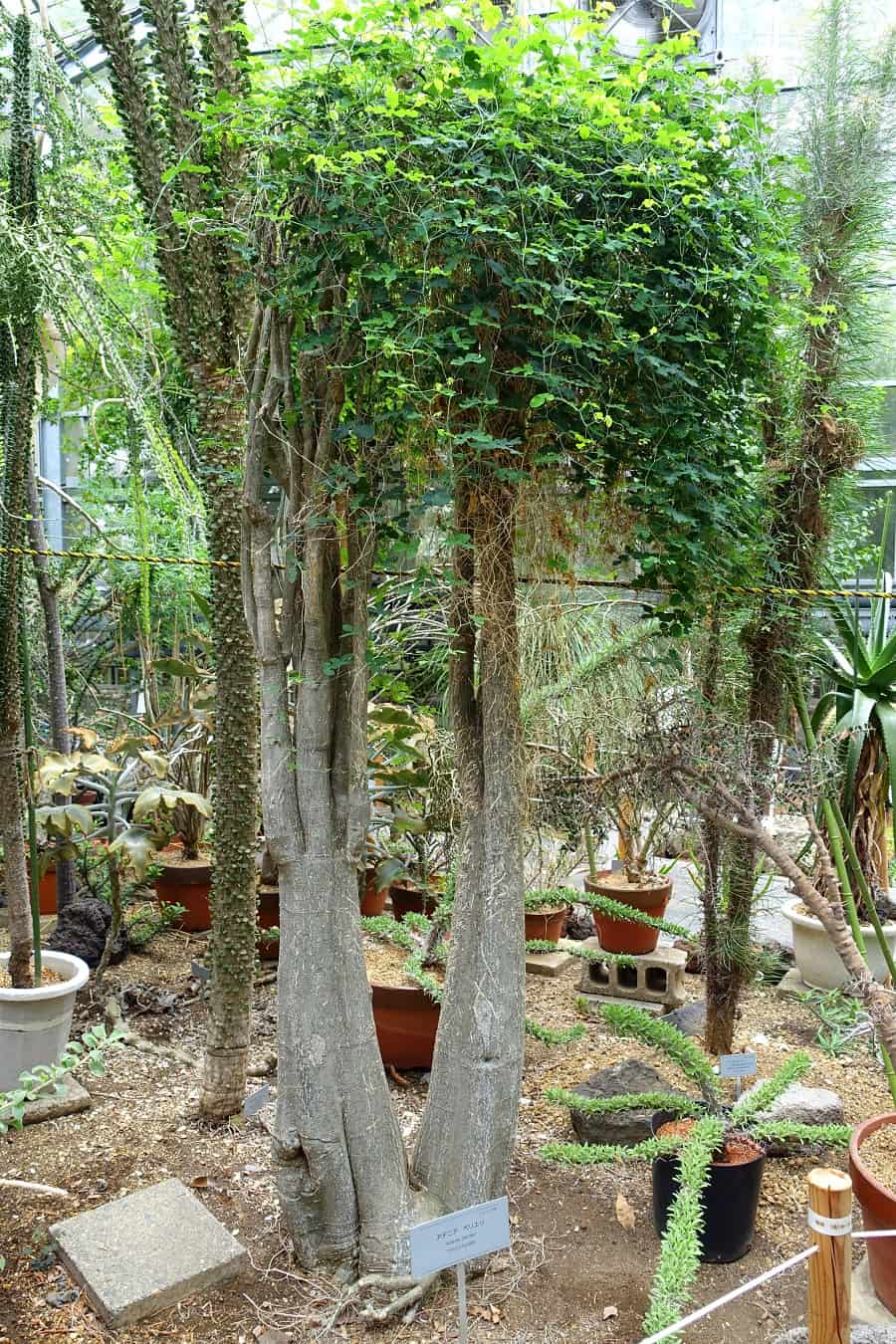Adenia perrieri is a herbaceous climbing plant that grows up to 2 meters in height, although it can occasionally be up to 3 meters long.
The caudex (main stem) is somewhat fat and can measure up to 20 cm in diameter.
From this stem, several green vines grow, which can reach a height of 2 or 3 m.
The leaves come in various shapes and sizes and are up to 3.5 cm long and 1.5 cm wide.
The rootstock functions act as a reservoir of water, which the plant uses in times of drought.
From this rootstock, there is a short and thin woody stem that divided leaves during the spring.
The flowers of Adenia perrieri are small and greenish-white in color.
Adenia perrieri is quite a pretty and different plant.
You can have it in your garden or patio as a decorative plant or also as a way to have a piece of nature in your sweet home.
And do not worry about the care; it is a fairly simple plant to care for and does not have special needs.
With a good substrate, adequate watering, and a good amount of sun, this plant will grow to perfection.
You may like: Adenia stenodactyla
Adenia perrieri Care
Follow these steps, and you won’t have any issue with the care of your succulent plant.
Illumination
Adenia perrieri can grow quite well in full sun or partial shade.
Something curious about this plant is that the Adenia perrieri likes to be in the shade, while the leaves like to be in the sun.
One recommendation is to protect your plant during the sunniest summer hours to prevent the leaves from burning.
Propagation
The best way to propagate your Adenia perrieri is through seeds, since propagation by cuttings is possible, but usually, the plant does not produce a caudex.
If you want the plant to produce seeds, the best way to propagate them is from cuttings since they bloom more freely.
But if you want the plant as decoration, it is best to grow them from seeds, since they develop a caudex.
Substratum
A very porous substrate is needed; you can add a universal substrate: pumice, vulcanite, and perlite to improve drainage.
If you don’t want to get too complicated with the substrate, you can buy a substrate for cacti and succulents, as they do very well.
Pests or diseases
The main problem with adenia is root rot when overwatered.
During spring and summer, keep taking care of your plant to prevent it from getting sick from some very common pests at this time of year.
Watering
This plant should be watered with some regularity in summer, while in winter, it is best to keep the soil dry as much as possible to prevent the plant from rotting easily.
Also, this beautiful plant does not like to be watered a lot when it has no leaves.
Fertilization
You can fertilize your plant during the active growing season, that is, during spring and summer.
You only have to apply a specific fertilizer for cacti and succulents once every 2 to 3 weeks.
During the fall and winter, suspend fertilization; at this time, the plant does not need to be fertilized.
What you can do is add some fungicide during the winter (it can even be homemade) to prevent the appearance of fungi.
Temperature
These plants appreciate warm, sunny climates.
They tolerate high temperatures quite well.
The ideal temperature for this plant is approximately 70ºF (21ºC).
If you have your plant in a pot, it is best that you keep your Adenia perrieri inside your home during the autumn and winter months, all with the purpose of protecting it from extreme cold.
If the temperature where you live is not lower than 60ºF (15ºC), you can have it outside, while if the temperature is below 44ºF (6ºC), it is best to have it inside.
Transplant
If you have your plant in a pot, it is best to transplant it every two or three years.
If you notice that the roots are coming out of the drainage hole, it is time to transplant.
Make sure that the new pot has a drainage hole; you can also take the opportunity to add some slow-release fertilizer to strengthen your plant.
Pruning
You don’t have to prune Adenia perrieri as regularly.
You just have to remove those leaves that are already wilted, to give the plant a more beautiful appearance and maintain its health.
Toxicity
This plant’s sap is poisonous, so you should handle the plant with caution, especially when pruning or transplanting your adenia perrieri.
You should also be careful with thorns, as they can be dangerous.
